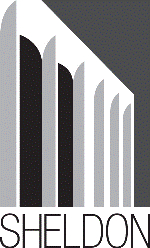Fine and Performing Arts, Hixson-Lied College of

Sheldon Museum of Art: Catalogs and Publications
Date of this Version
2009
Citation
Sheldon Museum of Art, August 29, 2008- June 16, 2009
Abstract
Our physical reality-its span, depth and breadth; from microcosm to macrocosm, from particle to planet-may be experienced through the eye of the artist as we contemplate a work of art.
It is clear that the physical is a primary element of art, but that statement does not encompass the multitude of ways the physical may be expressed. From antiquity, artists have used their art to encapsulate and express the world, or to change, invent and portray the physical to express their view of reality.
Line, form, color, texture and composition produce a visual experience of a subject that delineates and explicates the physical.The image created is ordered or disordered; harmonious or dissonant but inherent in art is a message from the artist's mind communicated physically.
Early artists recognized the storytelling capacity of art and used religious and secular narratives in art. Later artists realized that a comprehensive story was not essential and artists began to express more personal and limited narratives in their work Gradually art moved away from realism, and new movements and styles emerged such as Impressionism, Cubism, Surrealism, and Abstract Expressionism. Artists' choice of subjects and themes broadened permitting compositions to convey an artist's frame of mind.The changes transformed art from a limited vocabulary of one language to a wide range of voices and possibilities in communication and personal expression.


Comments
All images are copyright by the original artists. Publication copyright 2009 The Regents of the University of Nebraska